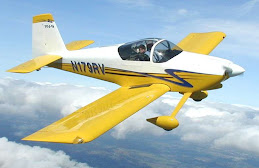Thurs 8th Nov. 3hrs 10min
Countersunk forward and aft spar flanges #40. Countersunk spar doublers and aft spar web #30.
Another evening of mistakes. Firstly, I had difficulty working out how to adjust the microstop cage and set it to the correct depth for the intended rivet. There is no measurement gauge (at least on the model I have) so this is a trial and error process and I went through a lot of scrap pieces to get it right (as I thought). Then moving on to the actual work piece, my first countersink was way bigger than the test pieces. Perhaps I did not push the drill fully home on the test pieces. The very first hole is definitely enlarged. I corrected the setting of the cage and went ahead. Looking from the top, it seemed that the countersink was removing material right through to the other side and when I put a #40 drill bit into the hole, it seemed to be very slightly undersized. I rang my inspector about this and he reckoned if that was the case then I should stop. However, when I looked at the holes very carefully with a jeweller’s loupe, I could see that the holes do indeed have a cylindrical section remaining so the countersink did not go all the way through the material. The play that I experienced between the hole and the drill bit was probably because I was using the fluted cutting end . If I had tried with the shank it would probably have been tight. Overall, I have one enlarged hole and I don’t think that will unduly affect the strength of the skin-spar join. After all, it is one of twenty or more along that flange. I will use an oops rivet or make one by slightly compressing an AD3 rivet in the squeezer so that its shank ‘thickens’ while the head remains the same size.
Next mistake was to countersink some of the wrong holes on the forward face of the aft spar doubler. I now have three additional holes that should have stayed flat. There is plenty of warning about this on builder’s sites and I did look carefully at the drawings. I just mis-identified the holes on the actual work piece. I guess I should be more liberal with my markings before I commit to removing material. In sporting parlance, this would be an ‘unforced error’. I think the best thing to do now is to use a countersink rivet in those positions. It’s strength will be similar to a universal head. It is just that the pattern of rivet heads on the finished structure will not be perfect. However this will eventually be hidden under the tailplane fairings.
Countersinking feeling
Labels:
construction,
countersink,
empennage,
homebuilt,
Horizontal stabilizer,
HS-903,
kit,
RV-9,
Vans
Subscribe to:
Post Comments (Atom)


No comments:
Post a Comment